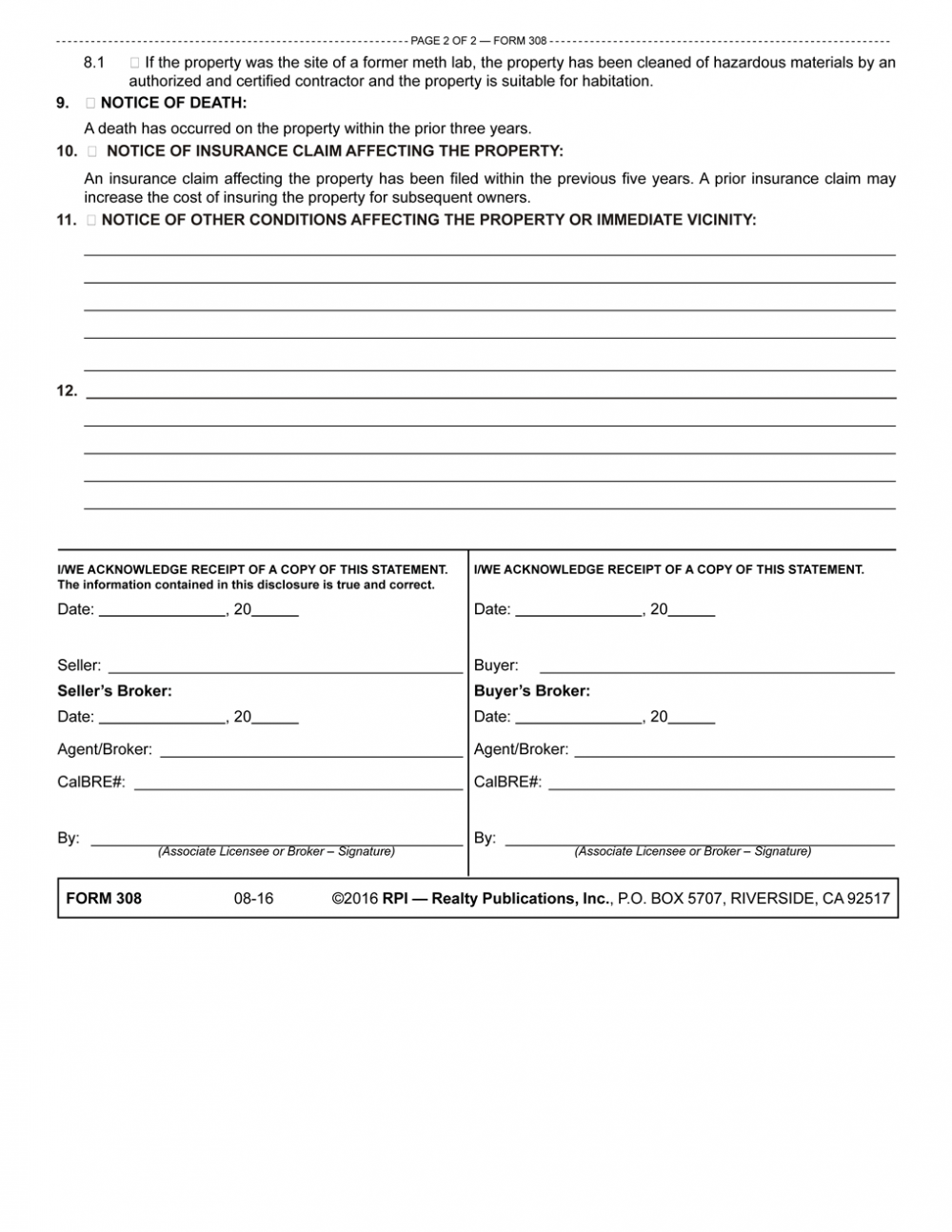Form-of-the-Week:
Unique Factors and Conditions Affecting Property and Seller’s Neighborhood Security Disclosure – Form 308 and 321
External material facts affecting the property’s value
A broker and their agent, with authority to exclusively representative a seller of a one-to-four unit residential property, takes reasonable steps to promptly gather all material facts about the property which are readily available to the seller, the seller’s broker or the broker’s agent. Further, the broker’s and agent’s duty owed the seller to disclose to prospective buyers material facts known to them is not limited merely to disclosures of the property’s physical condition.
When the seller or seller’s agent considers property disclosures, there are two operative phrases from case law to keep in mind:
- readily available information; and
- relevance to a buyer’s decisions.
In addition to a property’s physical condition, neighborhood and area conditions which adversely affect the property’s value and desirability are also considered material facts. Disclosure of facts yielding a negative effect on the value of property is required regardless of whether the negative effect is explicitly stated on a pre-printed transfer disclosure statement (TDS) form. Anything less is deceit, and thus a fraud on the buyer by the seller’s broker and agent. [Calif. Civil Code §§1102(a), 1102.3, 1102.8; see RPI Form 304]
Area factors and conditions known to the seller or the seller’s broker or agent which negatively affect a property’s value and desirability are disclosed to prospective buyers as soon as practicable (ASAP) — i.e., before a purchase agreement is entered into by the seller. In addition to the TDS, the seller’s broker discloses external factors unique to the subject property or surrounding area which affect a property’s value by using a disclosure form which specifically references the condition.






















